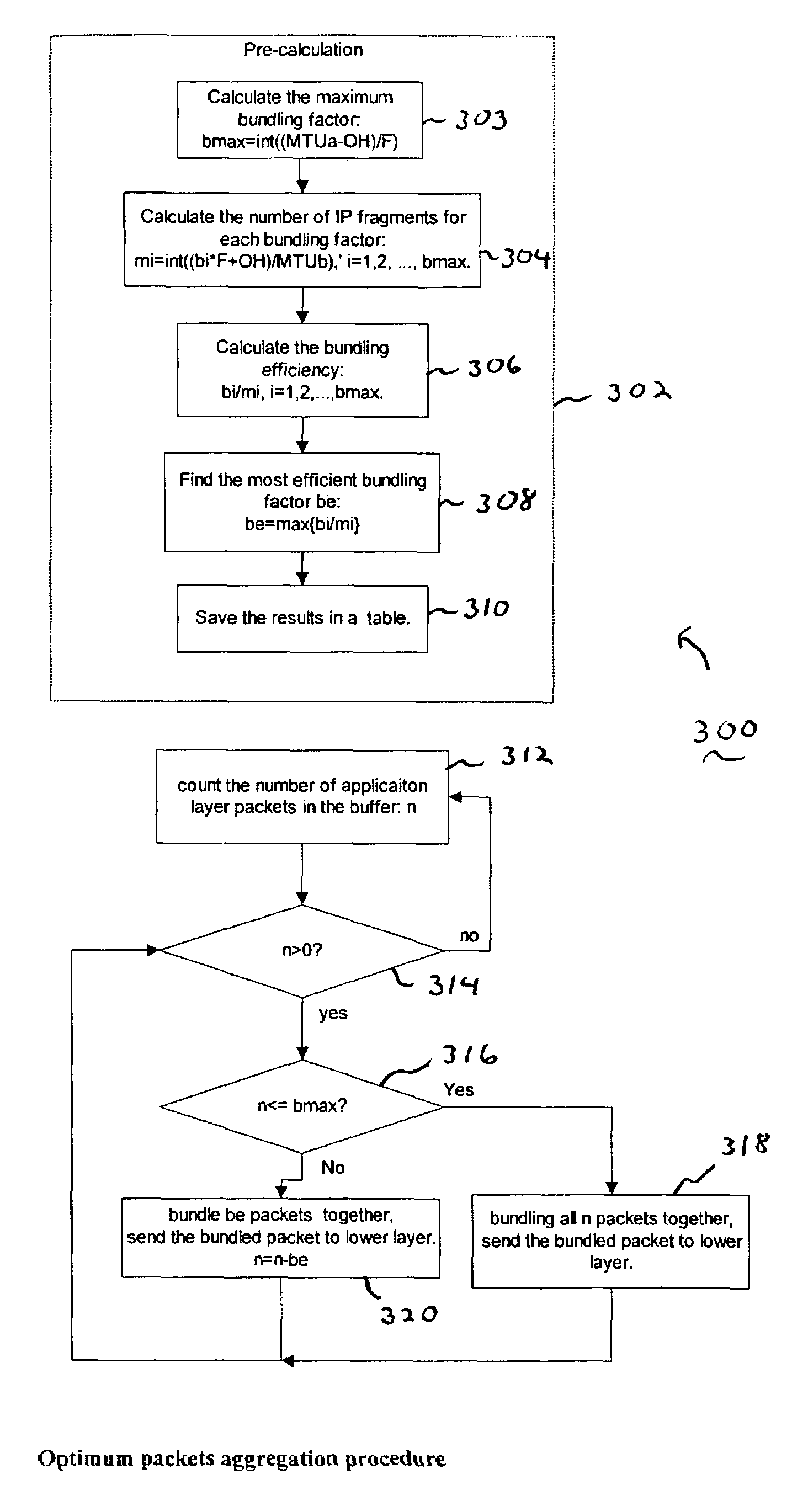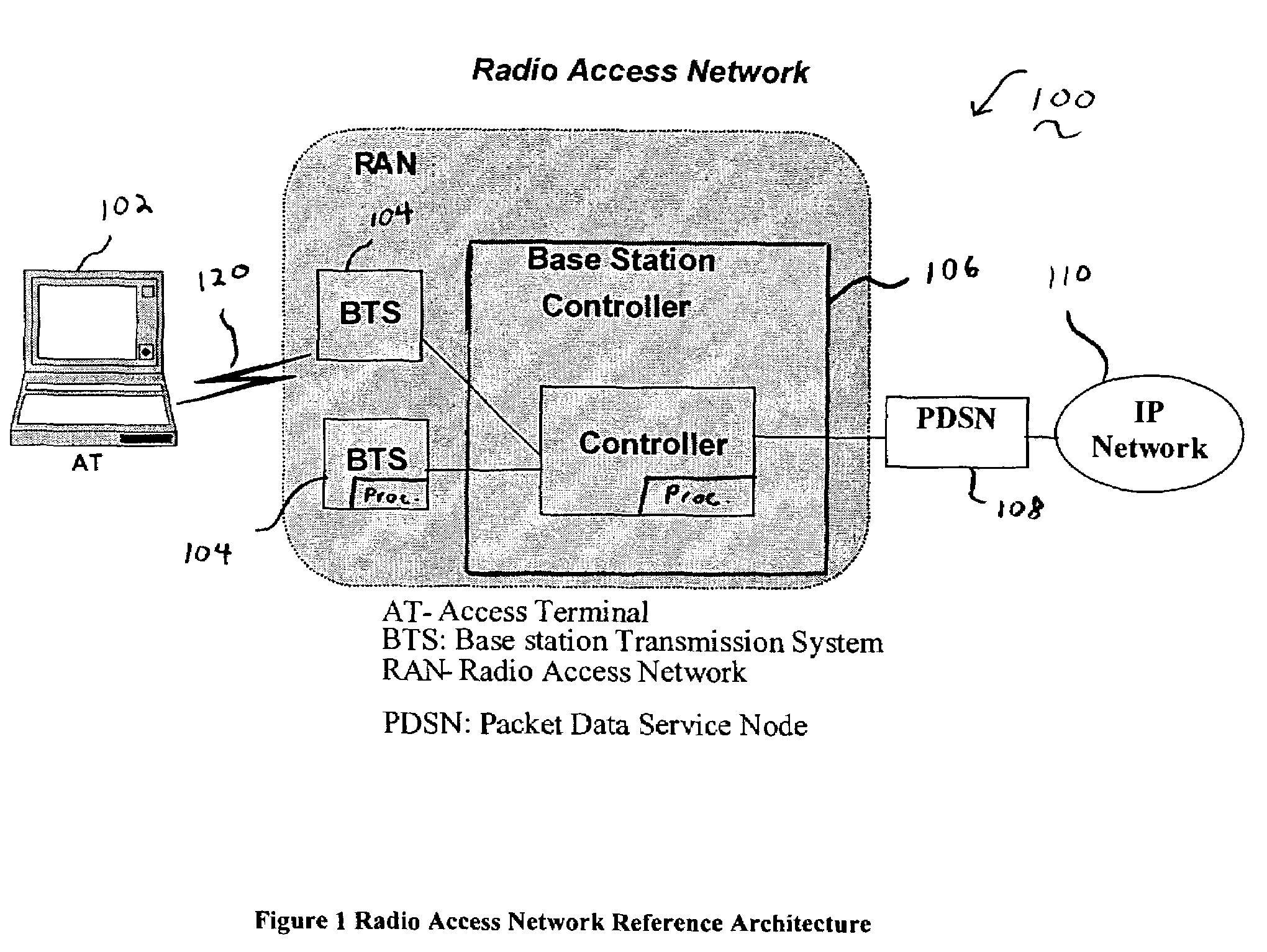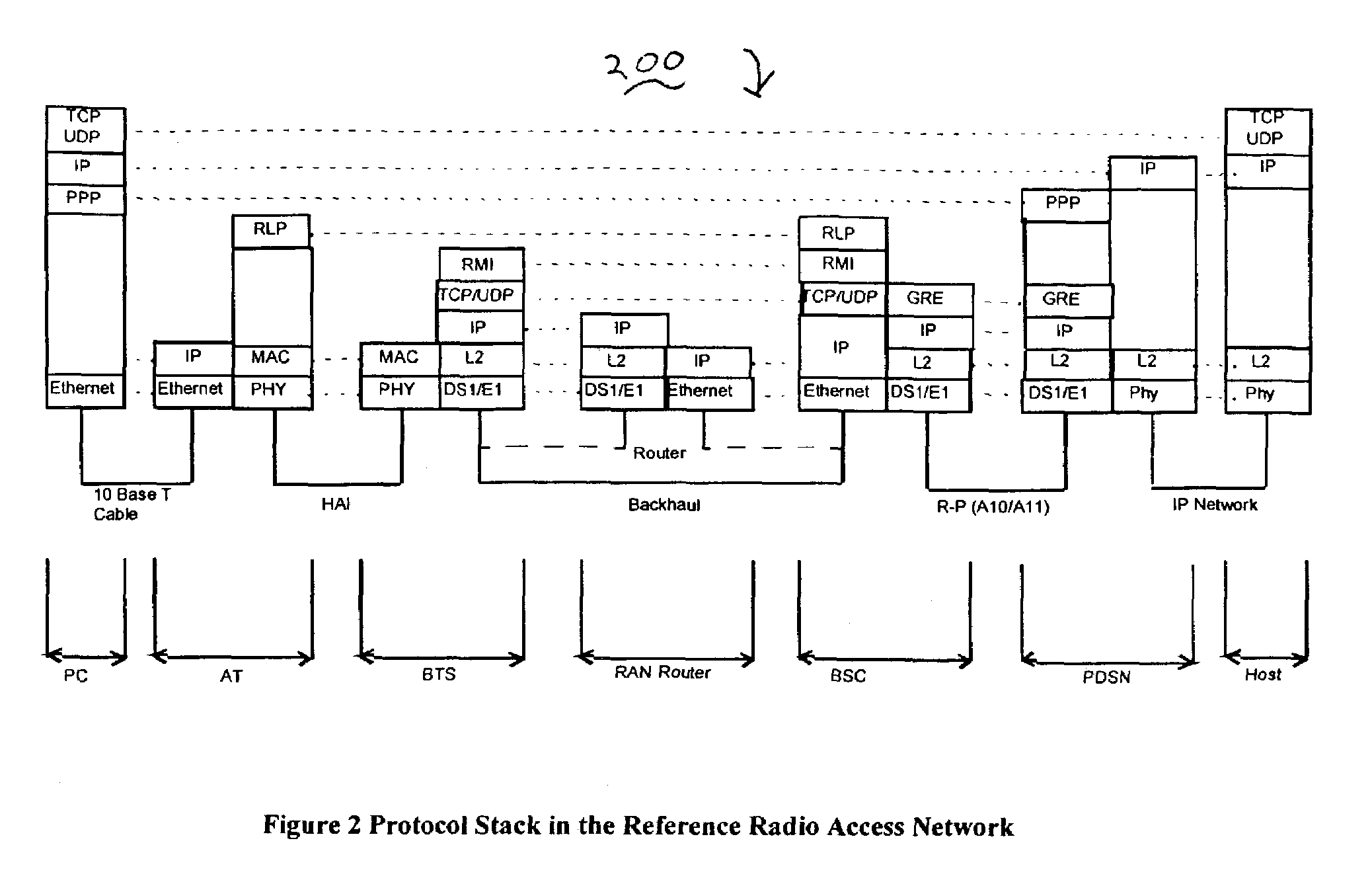Methods and apparatus for optimum packet aggregation in a communication network
a communication network and packet aggregation technology, applied in electrical equipment, digital transmission, data switching networks, etc., can solve the problems of increasing processor occupancy and extra processing power, and achieve the effect of optimizing resource utilization and improving packet transport efficiency
- Summary
- Abstract
- Description
- Claims
- Application Information
AI Technical Summary
Benefits of technology
Problems solved by technology
Method used
Image
Examples
Embodiment Construction
[0013]The present invention is a methodology for providing packet aggregation to achieve optimum trade-off between transport efficiency and processing power. Although an exemplary embodiment of the invention is described in connection with the transmission between a base station controller (BSC) and cell radio control unit (CRC) at a base station (BTS), and the CRC to the modem cards in BTS, and the interface / link between them, it would be apparent to those skilled in the art that the present invention is applicable to other network areas requiring packet aggregation, including, for example, voice over IP networks where small application layer packets (e.g., voice frames) need to be aggregated or multiplexed together to be transported over IP networks.
[0014]In accordance with the discussion of the present invention, it is assumed that application layer packets (e.g., the RLP frames) can be aggregated and encapsulated into an IP packet (executed via multiple layers in the example) at...
PUM
 Login to View More
Login to View More Abstract
Description
Claims
Application Information
 Login to View More
Login to View More - R&D
- Intellectual Property
- Life Sciences
- Materials
- Tech Scout
- Unparalleled Data Quality
- Higher Quality Content
- 60% Fewer Hallucinations
Browse by: Latest US Patents, China's latest patents, Technical Efficacy Thesaurus, Application Domain, Technology Topic, Popular Technical Reports.
© 2025 PatSnap. All rights reserved.Legal|Privacy policy|Modern Slavery Act Transparency Statement|Sitemap|About US| Contact US: help@patsnap.com



